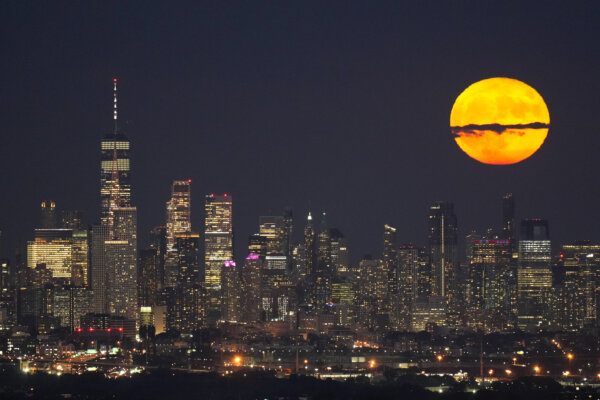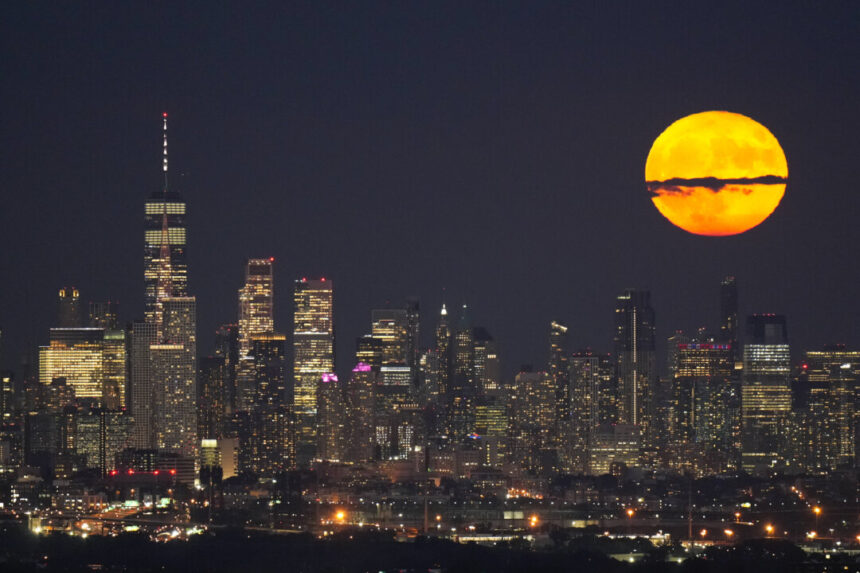
CAPE CANAVERAL, Fla.—The upcoming week will mark the first of four supermoons of the year, offering a captivating view of Earth’s celestial companion.
On Monday, stargazers will witness the spectacle as the full moon comes slightly closer to Earth, giving the illusion of being larger and brighter in the night sky.
“I like to think of the supermoon as a great reason to start observing the moon more regularly,” said Noah Petro, project scientist for NASA’s Lunar Reconnaissance Orbiter.
The supermoon in August will kick off a series of lunar events. September’s supermoon will coincide with a partial lunar eclipse. October will bring the closest supermoon of the year, followed by November’s supermoon to end the year.
What is a supermoon?
A supermoon is a popular term rather than a scientific one, occurring when a full moon aligns with a close approach to Earth. This phenomenon occurs three or four times a year due to the moon’s elliptical orbit.
Although a supermoon may not actually be larger, it can appear that way, although the difference is subtle according to scientists.
“It can be hard to notice the difference unless you compare them in images or have observed many full moons, but it is worth trying,” Petro explained.
Comparison of Supermoons
There will be four supermoons this year.
The first one will be 224,917 miles (361,970 kilometers) away. The next supermoon in September will be nearly 3,000 miles (4,484 kilometers) closer on the night of September 17. That night will also feature a partial lunar eclipse visible in parts of the Americas, Africa, and Europe as the Earth’s shadow covers the moon.
The supermoon in October will be the closest of the year at 222,055 miles (357,364 kilometers) from Earth, followed by November’s supermoon at a distance of 224,853 miles (361,867 kilometers).
Benefits of Observing Supermoons
While only the most observant individuals may notice the subtle differences, it is easier to detect the increase in brightness—a supermoon can be up to 30% brighter than an average full moon.
With increased interest in lunar exploration by the U.S. and other countries, the moon is becoming a focal point once again. Petro, who is excited about the upcoming Artemis program for lunar exploration, notes the renewed interest in the moon.
“It certainly makes staring at the moon more enjoyable,” Petro remarked.
By Marcia Dunn





